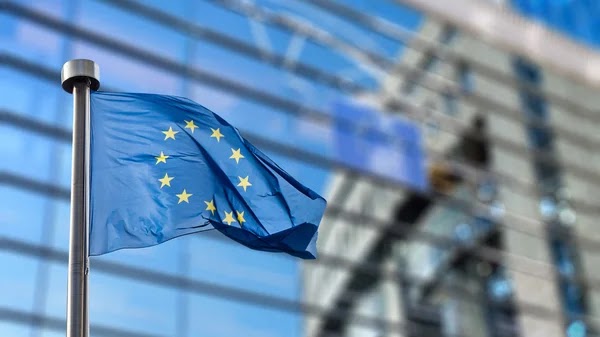Registering A Trademark In The European Union Is A Crucial Step For Businesses Aiming To Safeguard Their Brand Identity Across One Of The World’s Largest And Most Integrated Markets. The EU Trademark System, Managed By The European Union Intellectual Property Office (EUIPO), Offers A Streamlined Process That Grants Protection In All 27 Member States Through A Single Application.
Whether You’re Launching A New Product, Expanding Internationally, Or Protecting A Unique Logo, Understanding The Comprehensive Procedure—from Filing Your Application And Navigating The Opposition Period To Securing A 10-year Renewable Registration—is Essential.
This Guide Unpacks Everything You Need To Know To Confidently Register Your Trademark And Leverage Exclusive Rights That Strengthen Your Market Presence Across Europe.

Know Everything About Trade Mark Registration In The European Union
If You Want To Protect Your Brand Across The EU, You Need An EU Trademark Registration. It Gives Exclusive Rights In All 27 Eu Member States. Apply Once Through The European Union Intellectual Property Office (EUIPO).
The Process Is Affordable, Efficient, And Centralized. This Guide Covers Everything From Application Steps, Costs, And Common Mistakes, To Renewals And Legal Protection.
Comprehensive Overview Of The EU Trademark Registration Process
To Register A Trademark In The European Union, You Must Submit An Application To The EUIPO, Either Online Or Via Mail, Including Detailed Information Such As The Trademark Representation (Words, Logos, Shapes, Sounds), Owner Details, And A List Of Goods And Services Classified Under The Nice Classification System.
What Is an EU Trade Mark and Why Is It Important?
A European Union Trade Mark (EUTM) Is A Unified Trademark Protection That Covers All Current Eu Member States With A Single Registration. Instead Of Filing In Multiple Countries, Businesses Can Protect Their Brand Name, Logo, Slogan, Or Design Across The Region In One Go.
This Reduces Administrative Hassle And Offers Strong Legal Enforcement Throughout The EU. Companies Often Register To Protect Their Intellectual Property, Gain Market Exclusivity, And Prevent Infringement.
Whether You’re Launching A New Product Or Expanding Globally, An EUTM Strengthens Your Brand And Helps Avoid Costly Disputes Over Trademark Rights.
Who Can Apply For An EUTM?
Anyone—whether An Individual, Startup, Or Multinational Company—can Apply For An EU Trademark. You Don’t Have To Be A European Resident. Businesses Worldwide Frequently File For EUTMs To Secure A Presence In The European Single Market. Applicants Can Be Natural Or Legal Persons, And Ownership Is Publicly Recorded.
It’s Essential To Ensure The Mark Is Distinctive, Non-generic, And Doesn’t Conflict With Existing Trademarks. Many Businesses Use Trademark Attorneys Or Intellectual Property Experts To Avoid Rejections.

Common Mistakes And How To Avoid Them
Many Applicants Choose Too Broad Or Too Narrow A Classification Of Goods/services. Others File Marks That Are Descriptive, Non-distinctive, Or Similar To Existing Ones—leading To Refusals Or Oppositions. Use Clear, Unique Brand Names, And Always Perform A Full Trademark Search Before Filing.
Avoid Infringing On Earlier Rights, And Watch Out For Opposition Periods. Incorrect Filings, Missing Deadlines, Or Not Responding To Objections Can Delay Or Void Your Registration. Consulting A Trademark Lawyer Often Saves Time And Cost.
Costs And Duration Of An EUTM
The Basic Filing Fee Is €850 For One Class, €50 For The Second Class, And €150 For Each Additional Class. This Gives You 10 Years Of Protection, Renewable Indefinitely In Ten-year Periods. Compared To Filing In Multiple EU States, The EUTM Is Highly Cost-effective.
Renewal Reminders Are Sent In Advance, And Late Renewals Incur Surcharges. Protecting Your Brand Long-term Ensures Market Value, Credibility, And Consistent Branding Across Europe.
What Happens After Registration?
Once Registered, You Can Use The ® Symbol Throughout The EU. You Gain Exclusive Rights And Can Stop Others From Using Similar Marks For Related Goods Or Services. Monitor New Applications Through EUIPO’s Watch Services.
If Infringement Occurs, You Can File Oppositions, Cancellation Actions, Or Take Legal Steps Through EU Courts. Enforcement Is Uniform Across Member States. Keep The Trademark In Use To Avoid Revocation For Non-use (After 5 Years). Licensing And Assigning The Mark Are Also Possible, Adding Flexibility To Your IP Strategy.

FAQS
What Is The Basic Process For Registering A Trademark In The European Union?
The Registration Process Involves Filing An Application With The EU Intellectual Property Office (EUIPO), Followed By Examination For Compliance And Distinctiveness, Publication For A Three-month Opposition Period, And Finally, Registration With Issuance Of A Certificate If No Opposition Arises.
How Long Does Eu Trademark Registration Typically Take?
On Average, The Process Takes About 4 To 6 Months If There Are No Oppositions Or Objections. However, Delays May Occur If Oppositions Arise Or If Additional Examination Is Needed.
Who Can Apply To Register A Trademark In The EU?
Any Individual Or Company, Whether Based Inside Or Outside The European Economic Area (EEA), Can Apply. Non-EEA Applicants Must Appoint A Legal Representative Or Trademark Attorney, While EEA Applicants Can File Directly.
What Types Of Trademarks Can I Register In The EU?
The EU Accepts Diverse Marks Including Word Marks, Figurative Marks, Shape Marks, Sound Marks, Colour Combinations, Motion Marks, Holograms, Patterns, And Position Marks. These Can Be Registered As Individual, Collective, Or Certification Marks Depending On Their Nature.
Conclusion
Registering A Trademark In The European Union Through The EUIPO Provides Businesses With Unified Protection Across All 27 Member States, Ensuring Broad And Efficient Brand Security.
The Process Involves A Clear Sequence Of Steps Including A Comprehensive Trademark Search, Precise Classification Of Goods And Services, Filing The Application, Examination, Opposition Period, And Finally Registration With A 10-year Validity Subject To Renewal.
This Streamlined Procedure Allows Any Individual Or Legal Entity Worldwide To Secure Exclusive Rights To Their Mark, Helping Safeguard Brand Identity Against Infringement And Enhance Market Credibility. Importantly, Maintaining A Trademark Requires Genuine Use Within Five Years To Prevent Cancellation, Emphasizing The Strategic Role Of Trademarks In Brand Development And Enforcement Throughout The EU.
Overall, Understanding And Navigating This Registration Process Is Vital For Businesses Aiming To Protect Their Intellectual Property And Capitalize On The Benefits Of The Single-market System.
